
Ukrainian construction product manufacturers are actively preparing, and some are already ready to work in accordance with EU Regulation 305/2011 on the quality of construction products, Natalia Duzhylova, deputy head of the State Inspectorate for Architecture and Urban Development, told Interfax-Ukraine.
“One of the main issues that needs to be addressed (to work in accordance with European standards) is the lack of a full-fledged quality infrastructure, including a network of testing laboratories equipped with the necessary equipment, which makes it impossible to assess the conformity of construction products. Currently, eight testing laboratories in Ukraine have received the appropriate accreditation, which can provide testing services under Regulation 305 for 16 out of 35 categories of construction products,” she said.
The Deputy Head of the SIAG gave the example of the cement industry, which is fully prepared for the implementation of the C05 Regulation even from January 1, 2024. This fundamental industry is a leader in the implementation of European legislation, and producers are fully prepared to work according to European standards. In particular, the standards have been translated, laboratories are operating, and electronic manufacturer’s accounts in the Unified State Electronic System in the Construction Sector (USESCS) have been set up, where manufacturers upload declarations of conformity for cement products.
As for other building materials industries, most of the standards have already been translated, but in the current economic situation, it is difficult for manufacturers to secure the purchase of new testing equipment for laboratories.
“Some industries have also been actively preparing for industrial visa-free travel in advance. For example, the cable industry had two laboratories fully equipped for accreditation. However, one of them was completely destroyed by the enemy, and the other is located on the temporarily occupied territory,” Duzhylova cited an example.
Investing in laboratory equipment that analyzes the quality of building materials and compliance with standards is a significant investment ($0.5-2 million). There should be at least two laboratories for each type of product: one to test the product and the other to monitor it as needed.
“We are now turning to donors for help. According to the law, the grant recipient can be a public or private institution, or an educational institution, which is also an option. In many European countries, such laboratories are set up on the basis of educational institutions and universities with research centers,” said Duzhylova.
Among the industries that are already actively working with donors on this issue, she named the Window Industry Association. “The Window Industry Association has successfully negotiated with UNIDO and received funding for laboratory equipment. The laboratory in Kryvyi Rih has already received accreditation. The second laboratory will be opened in Rivne in the near future,” said Duzhylova.
As reported, the law “On the provision of construction products on the market”, which ensures the implementation of the provisions of EU Regulation 305/2011 on the quality of construction products in Ukrainian legislation, was adopted in 2020 and entered into force in 2023. Starting from January 1, 2023, all construction products in Ukraine can be put into circulation and made available on the market in accordance with the requirements set out in Regulation 305 and the relevant regulatory technical specifications. Given the martial law and existing administrative and financial barriers, the previous Regulation was extended (CMU Resolution No. 1764 dated 20.12.2006), and until 2025 this Regulation is valid in Ukraine in parallel with the 305th.
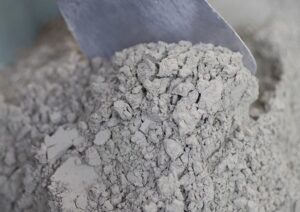
Ukrainian-made cement should become a key material for reconstruction, and at the peak of reconstruction the market could reach 15 million tons of products, or more than $1 billion a year, according to Ukrcement.
“In the production of building materials, we can really compete with foreign producers by taking advantage of logistics. In addition, the average price of cement in Ukraine is more than 30% lower than in other Central and Eastern European countries. Tales of “cheap imports” are just private interest,” the association said.
At the same time, the cost of cement has increased significantly over the past three years. According to Ukrcement, since 2020, the cost of energy has increased by more than 200%, coal by 280%, and transportation by 317%. At the same time, energy and logistics account for 72% of the cement production cost structure.
The association believes that the state has two main tasks in managing the recovery: maximum transparency in the selection of contractors and localization.
The potential of Ukraine’s cement industry is 13.6 million tons of cement annually, said Lyudmyla Krypka, executive director of the Ukrcement Association. At the same time, companies are preparing for consumption growth and are planning to expand their capacities.
“The cement industry is probably the only heavy industry in Ukraine where players have modernized their production facilities to meet the quality and ensure the required production volumes. We are preparing for a possible increase in cement consumption. At least two companies already have plans to build additional clinker kilns,” the expert told Interfax-Ukraine.
Ukrcement Association was established in January 2004 through the reorganization of the Ukrainian Concern of Cement Industry Enterprises and Organizations Ukrcement.
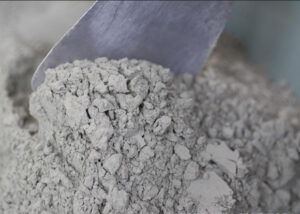
The Ministry of Economic Development and Digitalization of Moldova has announced that Ukraine will cancel the anti-dumping duty on imports of Moldovan cement by the end of 2023, InfoMarket reports.
It is noted that the Ukrainian side announced such a possibility following constructive discussions held during a meeting of the co-chairs of the Moldovan-Ukrainian intergovernmental commission on trade and economic cooperation held in Odesa, which was also attended by State Secretary of the Ministry of Economic Development and Digitalization Vadim Humene.
One of the main topics discussed at the meeting was Ukraine’s imposition of an anti-dumping duty on cement imports from Moldova, which affects the operations of cement production companies in Moldova and has negative consequences for bilateral trade between the countries.
In this regard, Vadim Ghumene insisted on a request to cancel the anti-dumping duty on imports of cement of Moldovan origin to Ukraine in the near future in order to avoid Moldova initiating trade defense processes in sectors affected by massive imports from Ukraine.
According to the Moldovan side, Ukraine has expressed its readiness to cancel the anti-dumping duty on imports of cement from Moldova by the end of 2023. In addition, the parties expressed their openness and readiness to help remove barriers to trade, in particular, to simplify border controls to optimize the flow of goods, review environmental duties and ensure transparent, uniform application of legislation by both countries.
As reported, in 2019, the Interdepartmental Commission on International Trade (hereinafter – the ICIT) applied anti-dumping duties on imports of cement to Ukraine at the level of 57.03% for cement from the Republic of Belarus; 94.46% for cement from the Republic of Moldova; 114.95% for cement from the Russian Federation. The application of such high duty rates indicated the existence of a violation of competition by these three countries and the need to protect Ukrainian producers. The measures were imposed for a period of five years and are valid until June 2024. They may be extended if the national producer initiates a review procedure, during which the Ministry of Economy and the ICIT will determine whether it is expedient or inexpedient to extend them.
In the summer of 2023, the ICIT terminated the interim review of anti-dumping measures against imports of cement produced by Rybnytsia Cement Plant originating in the Republic of Moldova, arguing that the extension of the final anti-dumping measures against imports of cement originating in Russia, Belarus and Moldova, in particular, produced by Rybnytsia Cement Plant, is necessary to level the playing field.
In the first half of 2023, Ukraine ranked second among Moldova’s main trading partners, accounting for about 14.6% of Moldova’s total trade. In January-June 2023, the trade turnover between Moldova and Ukraine amounted to approximately $929.5 million. At the same time, exports of Moldovan products to the Ukrainian market increased by 44% to $359.3 million, and imports of Ukrainian products increased by 42.6% to $570.2 million.
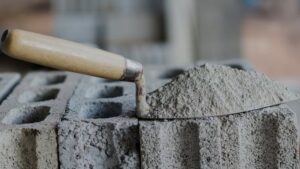
Italian cement producer Buzzi, through its subsidiary Dyckerhoff GmbH, has reached an agreement to sell part of its business in Eastern Europe to CRH, a leading provider of building materials solutions, for EUR0.1 billion, according to an official website on Tuesday.
As clarified in the release, the deals include a business in Ukraine and assets for the production of ready-mix concrete in Eastern Slovakia. Completion of the deal in Ukraine depends on obtaining the necessary regulatory approvals and is expected in 2024.
Buzzi Unicem SpA (Italy) combines businesses producing cement, concrete, sand, crushed stone, etc. The main activity of the group is the production of cement, which is produced in its own enterprises in Germany, the USA, Luxembourg, the Czech Republic, Poland, Russia and Ukraine. Dikerhoff Cement Ukraine PJSC, the Ukrainian branch of Buzzi, has branches set up at Volyn-Cement (Zdolbuniv, Rivne region) and YuGcement (Olshanske, Mykolaiv region) plants. The group also operates in the ready-mix concrete sector in Kiev, Odessa and Nikolaev.
Buzzi operates six ready-mix concrete plants in Eastern Slovakia.
It was reported in March 2023 that Italian cement producer Buzzi Unicem was listed by the National Agency for Prevention of Corruption (NAPC) as an international sponsor of war. Buzzi operates in Russia through OOO SLK Cement, which owns two cement plants, Sukholozhskcement and Korkino, a terminal in Omsk and the transport company Cemtrans. According to the NAZK, the company is one of the five leaders of the Russian cement industry.
Irish CRH Plc, the largest manufacturer of building materials in the world, in Russia owned six plants of building mixes, announced its withdrawal from the Russian market.
CRH entered the market of Ukraine in 1999, acquiring Kamenets-Podolsky cement plant in Khmelnitsky region. At the moment CRH also includes Odessa cement plant and Nikolaevcement (Lvov region).
A separate direction of CRH business in Ukraine is the production of concrete and reinforced concrete products. PoliBeton Energo’s Bila Tserkva Concrete Plant is a specialized enterprise that produces supports for power transmission lines. The PoliBeton concrete unit in the north of Odessa joined CRH in 2020.
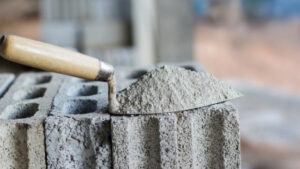
Cement production in Ukraine in 2022 decreased by 51% compared to 2021 – to 5.4 million tons, while its consumption was 35% of the indicator of the previous year, according to the association “Ukrcement”.
“Eight enterprises of the Association in 2022 produced cement strategically important for the country, which was primarily used on important construction sites of defense value. The decline in cement consumption led, respectively, to a decrease in production. At the same time, January 2022 was a record for cement production in the last six years”, – said Liudmila Krypka, executive director-head of the scientific and technical information department of the association “Ukrcement”.
According to her, export of products to the European Union helped slow down production decline. For example, cement exports for the year decreased by only 3.7% and amounted to 935 thousand tons, while imports decreased 14.8 times to 39 thousand tons.
In the structure of imports last year, 46.5% were ordinary cements, 41.6% – white cements, 10.9% – other hydraulic cements, 1% – alumina.
“The dynamics of cement exports 2022 indicates that the Ukrainian producers have fully provided the domestic market and continued to support their production with deliveries to other countries, mainly to the EU,” – said the expert.
In turn, Ukrainian companies in 2022 produced 16 types of cement, among which the most popular were cements with slag. At the same time manufacturers continue searching for ways to increase the efficiency of Portland cement while reducing the share of clinker, which is one of the main factors of reducing CO2 emissions, emphasizes Krypka.
The association is also considering using shredded construction waste from demolished buildings (linoleum, carpets, polyethylene, rubber, wood, plastic, roofing felt etc.) to burn in cement kilns as an alternative fuel, which can reduce the need for energy.
Last year “Ukrcement” in cooperation with SE “GosdorNII” published “Album of standard designs of rigid road clothes”, which contains information on variants of road clothes taking into account the category of roads, region, soil, technology.
“Road construction is a material-intensive production with a high proportion of the cost of raw and basic materials. Lack of bitumen forces us to switch to the best practices and domestic construction materials. Detailed characteristics of each construction are collected in the album, as well as technologies of restoration or strengthening of road with cement concrete”, – points out the executive director of the association.
Association “Ukrcement” was created in January 2004 by reorganization of Ukrainian concern of enterprises and organizations of cement and asbestos cement industry “Ukrcement”.
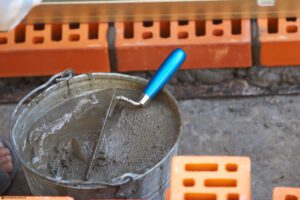
The volume of domestic cement consumption in Ukraine by late 2021 may reach 10 million tonnes for the first time since 2014, Head of the Ukrcement association Pavlo Kachur has said.
“We have production data for nine months, and we can predict with slight optimism that this year, for the first time since 2014, we will move to more than 10 million tonnes of cement consumed in the domestic market. If there are no emergencies, we will reach 10.5 million tonnes,” Kachur said in an interview with Interfax-Ukraine.
According to Ukrcement, in January-September 2021, cement production increased by 15.2% compared to the same period last year. At the same time, over the past four years, the volume of the cement market amounted to 9 million tonnes per year.
“Our market capacity is small. For the last four years, it is up to 9 million tonnes per year. In Poland, comparable in terms of population, which is much smaller geographically, the volume of consumption in 2020 amounted to 18.9 million tonnes – twice as much. Therefore, we have room to grow. Our factories operate at two-thirds of their actual capacity,” Kachur said.
According to him, the increase in cement consumption is associated with a positive period in the construction market, including active road construction.